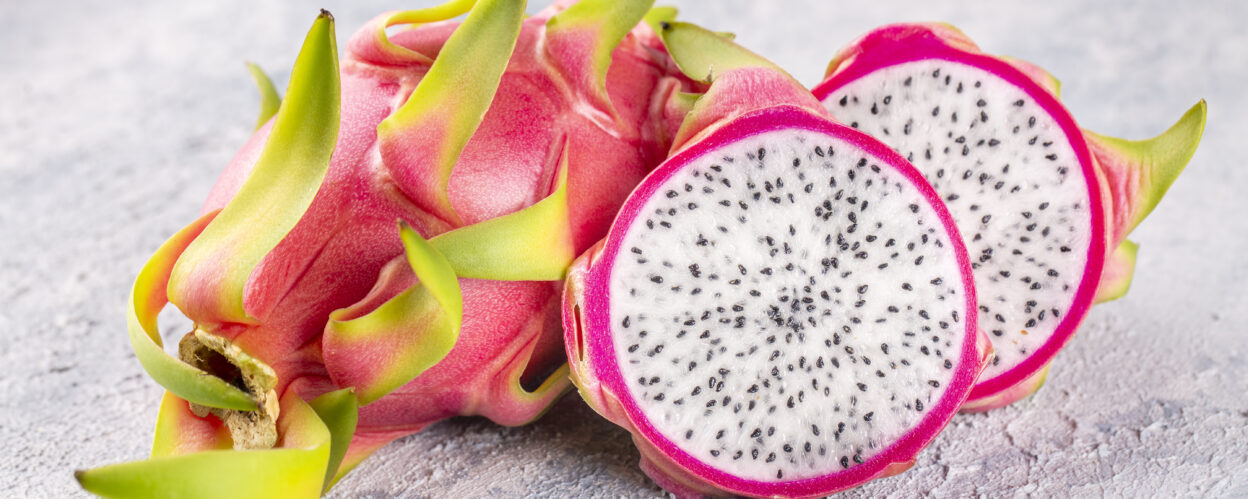Pitaya: learn more about fruit cultivation in Brazil
In 2023 Brazil will complete two decades cultivating Pitaya. This intense color fruit, which has a great use – even the Pitaya stem can be eaten – is currently a darling among nutrologists and nutritionists. But did you know that Brazil has a robust production of this fruit, originally from Central and other Americas?
In 2022 Brazil produced between 5 and 8 thousand tons of Pitaya, also known as dragon fruit. It is the fruit of several species of epiphytic cacti of the genera Hylocereus and Selenicereus. The Brazilian cultivation is widespread: it takes place in all states, with a stronger presence in São Paulo, Pará, Santa Catarina, Minas Gerais and Ceará.
The price, paid to the producer for each kilo of the fruit, can change depending on the demand and on which time of the year. It varies between 5 and 15 BRL, being a promising alternative for Brazilian producers. A portion of sales is aimed for export and in 2022 the country earned more than USD 1.7 million from the fruit’s international trade. What is most impressive about this data is the increase in international sales when compared to the previous year: a growth of 80%. The main destinations are some countries in the European Union, Canada and the United Kingdom.
According to a research by Mariana Larrondo Bicca, co-advisor of Professor Dejalmo Prestes in her doctorate at UFPEL, the search for a healthier diet increased the demand for fruits and the continuous search for the so-called “exotic” ones gave the market a boost. The information was released on March 3, during the 2nd Brazilian Symposium on Pitayas. The event was promoted by the Association of Pitaya Producers in Brazil (Appibras) with the support of the Luiz de Queiroz High School of Agriculture (Esalq/USP).
The sudden interest in Pitaya by people with a diet focused on healthy and low-calorie food is related to the benefits provided by the fruit. The amount of nutrients contained in Pitaya reduce cholesterol; perform glycemic control in type 2 diabetes; strengthen kidney and bone functions and even improve brain functions and eyesight. In addition to all these advantages, pitaya is also versatile: it can be consumed fresh or dried, in drinks, vitamins and used as a natural dye.

